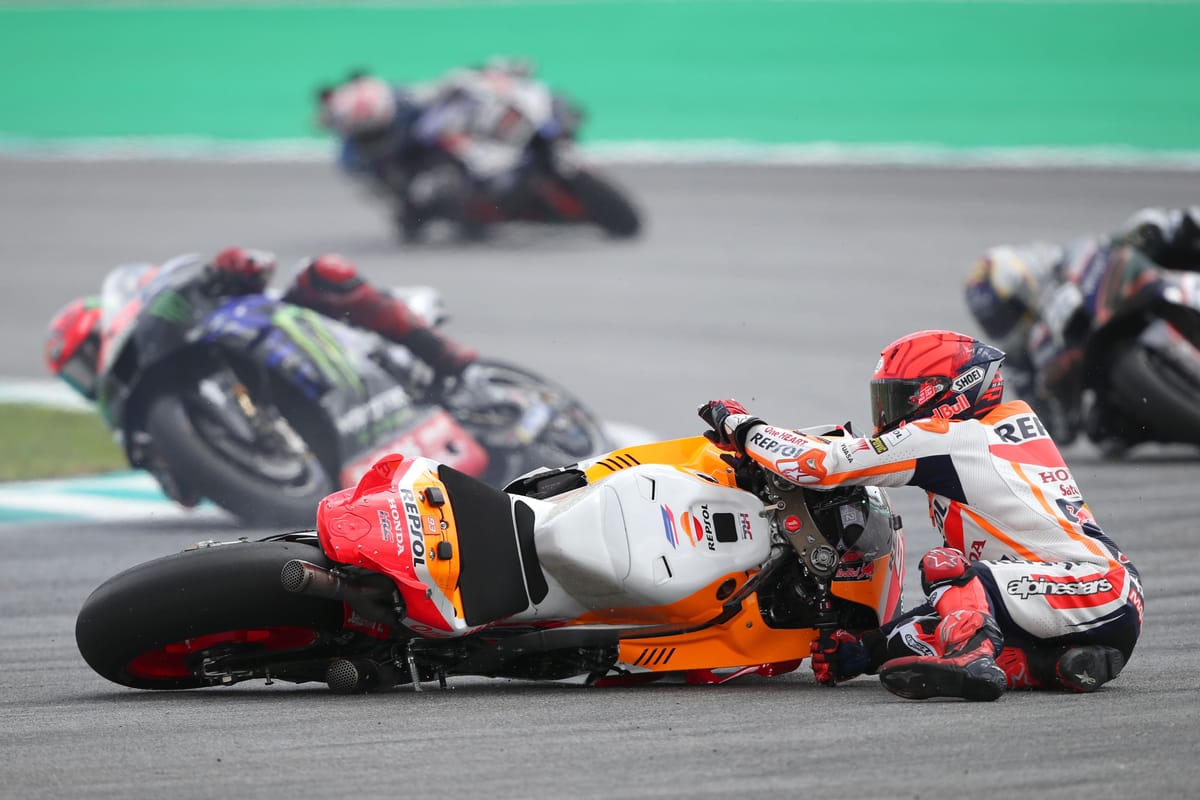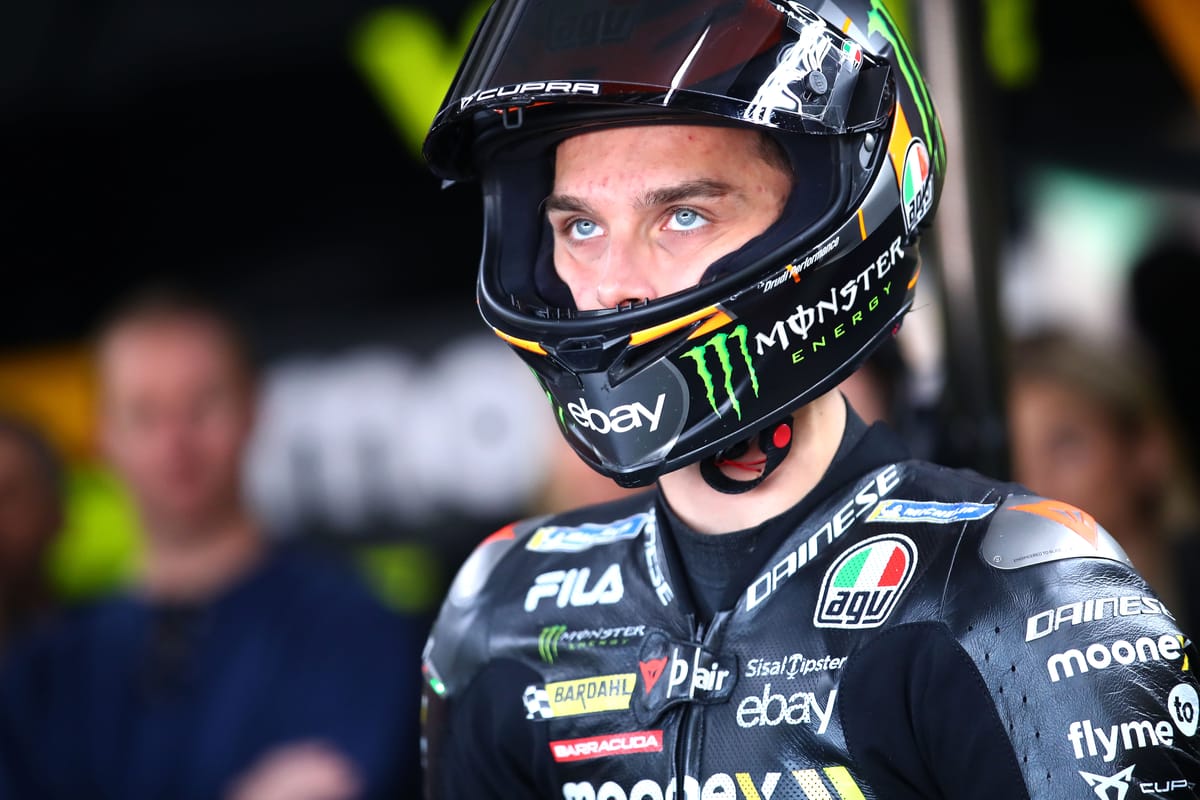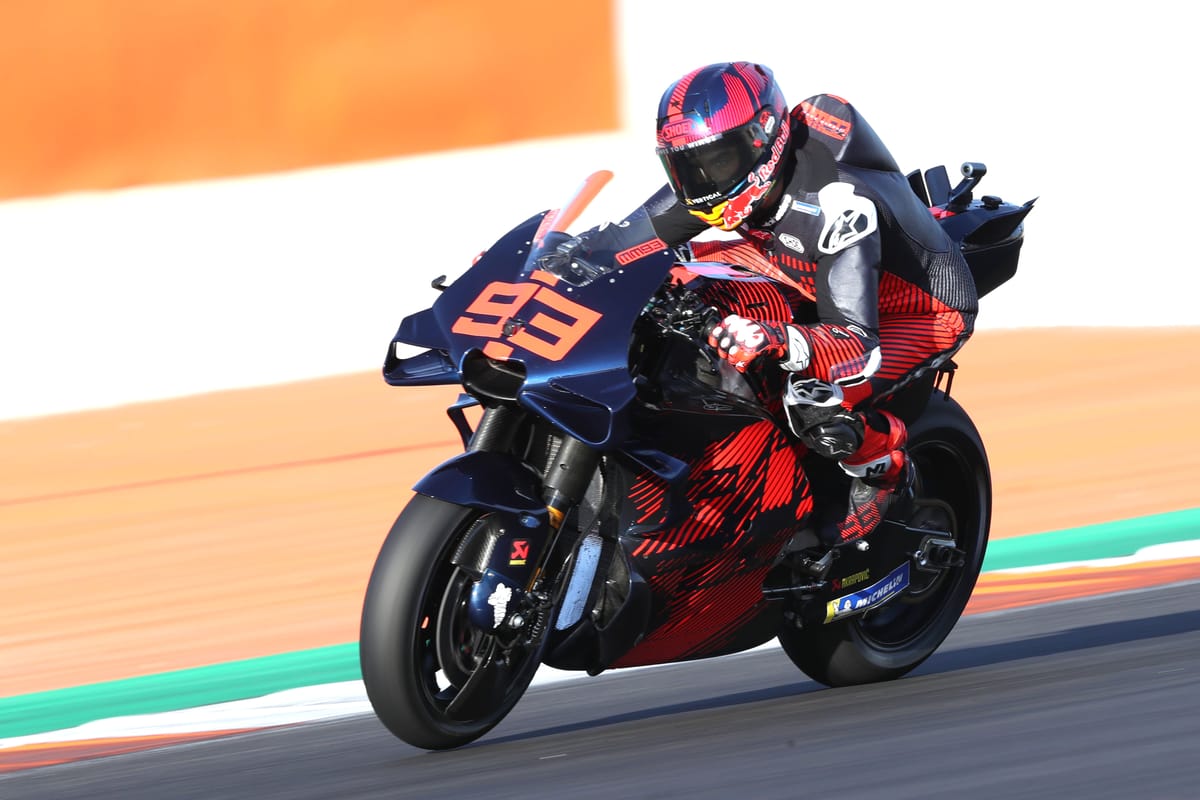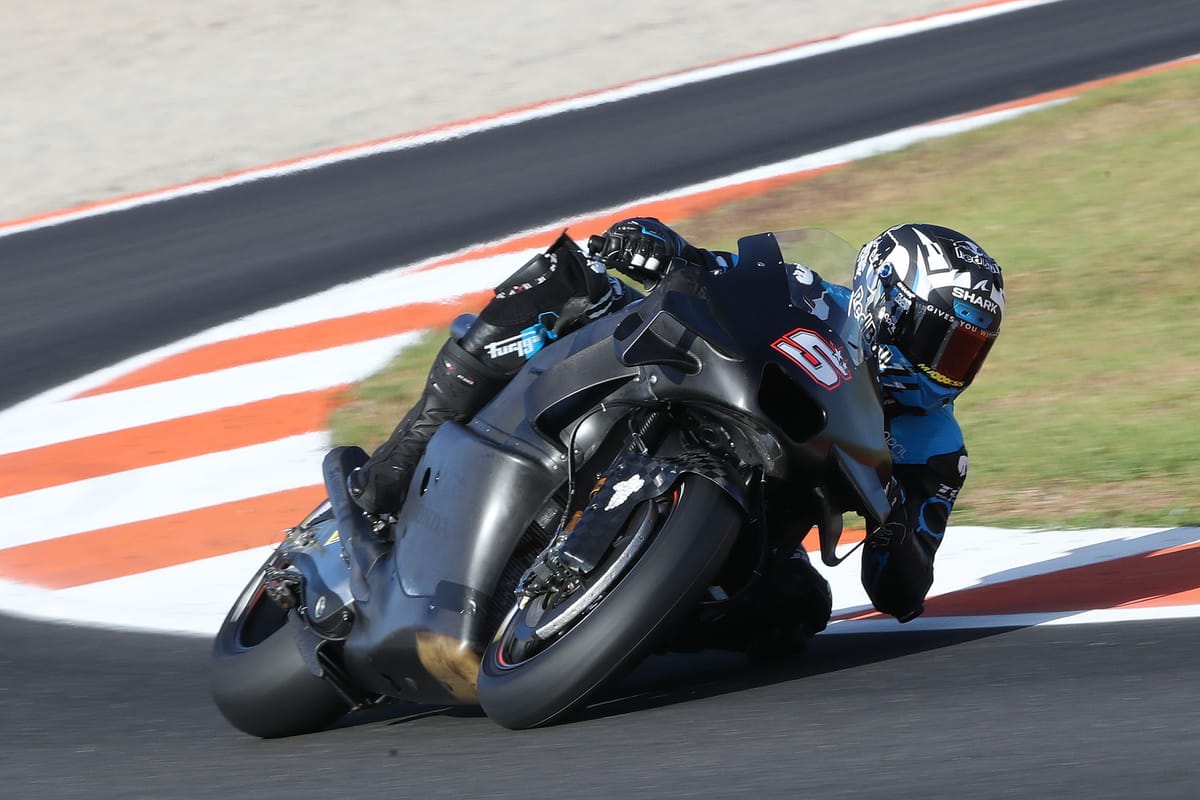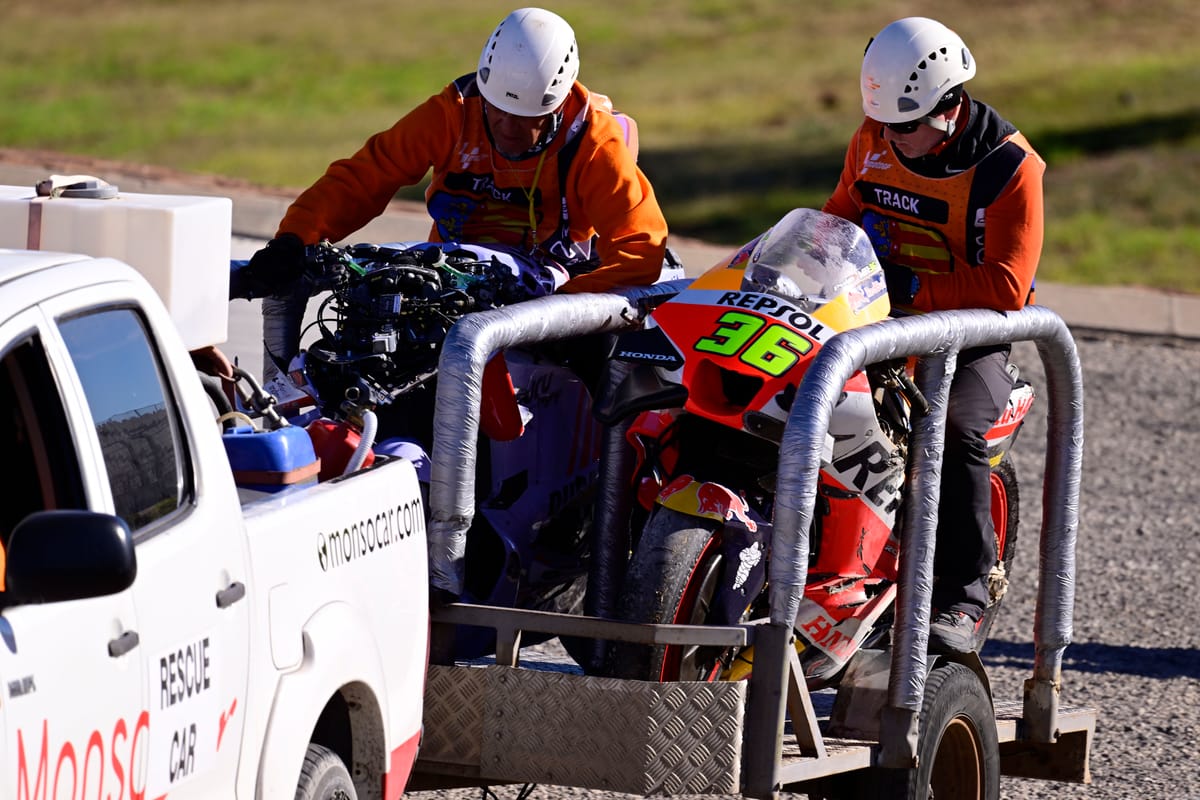On paper, there should be a clear hierarchy within the Repsol Honda MotoGP team coming in 2024.
On one side of its garage is an already-established Honda rider, on the other is a newcomer (yet somebody marginally older); the former was something of a prodigy rising through the ranks, the latter had to change perceptions of himself and, in a way, prove his MotoGP merit already after graduation.
And of course there's the fact that rider one, Joan Mir, is a MotoGP champion. And rider two, Luca Marini, is yet to win a premier-class race.
But only one of those two riders has a contract running beyond the end of the upcoming MotoGP season, and it ain't the 2020 MotoGP champion Mir.
Marini, brought in this year as an impromptu replacement for Marc Marquez, has a two-year deal in place with Honda. In theory - assuming that Honda contract guarantees a place in the factory team, which the announcement certainly heavily implied - that means he's one of just two riders already (publicly) contracted by a works MotoGP outfit beyond 2024, the other being KTM's lead rider Brad Binder.
How it happened
This, of course, is a direct consequence of Honda having had to scramble to replace Marquez (backing out of year four of a four-year deal) in a very peculiar moment in MotoGP's contract cycle.
Its free agent options were extremely limited, and riders under contract to rivals, even if it was possible to extricate them from said contract, required a bigger commitment than it was initially willing to offer.
Satellite Aprilia rider Miguel Oliveira, thought to have been the frontrunning choice at one point, went on record confirming reports that Honda was only looking for a one-year commitment. This was a turn-off for him, also for Johann Zarco (contracted by Honda and LCR and preferring in any case to tackle a multi-year project with LCR than having to switch to a satellite ride after a single Repsol year, which was apparently on the cards).
It will have also been a massive turn-off for every non-free agent rider - because it would've equated to swapping to a worse bike (the 2023-spec Honda RC213V was a worse bike by default compared to any of its rivals) that you don't know nearly as well as your current machine, without any extra contractual guarantees to make up for it.
We don't know if it would've tempted Marini - we didn't have to find out because Honda seemed to change its approach.
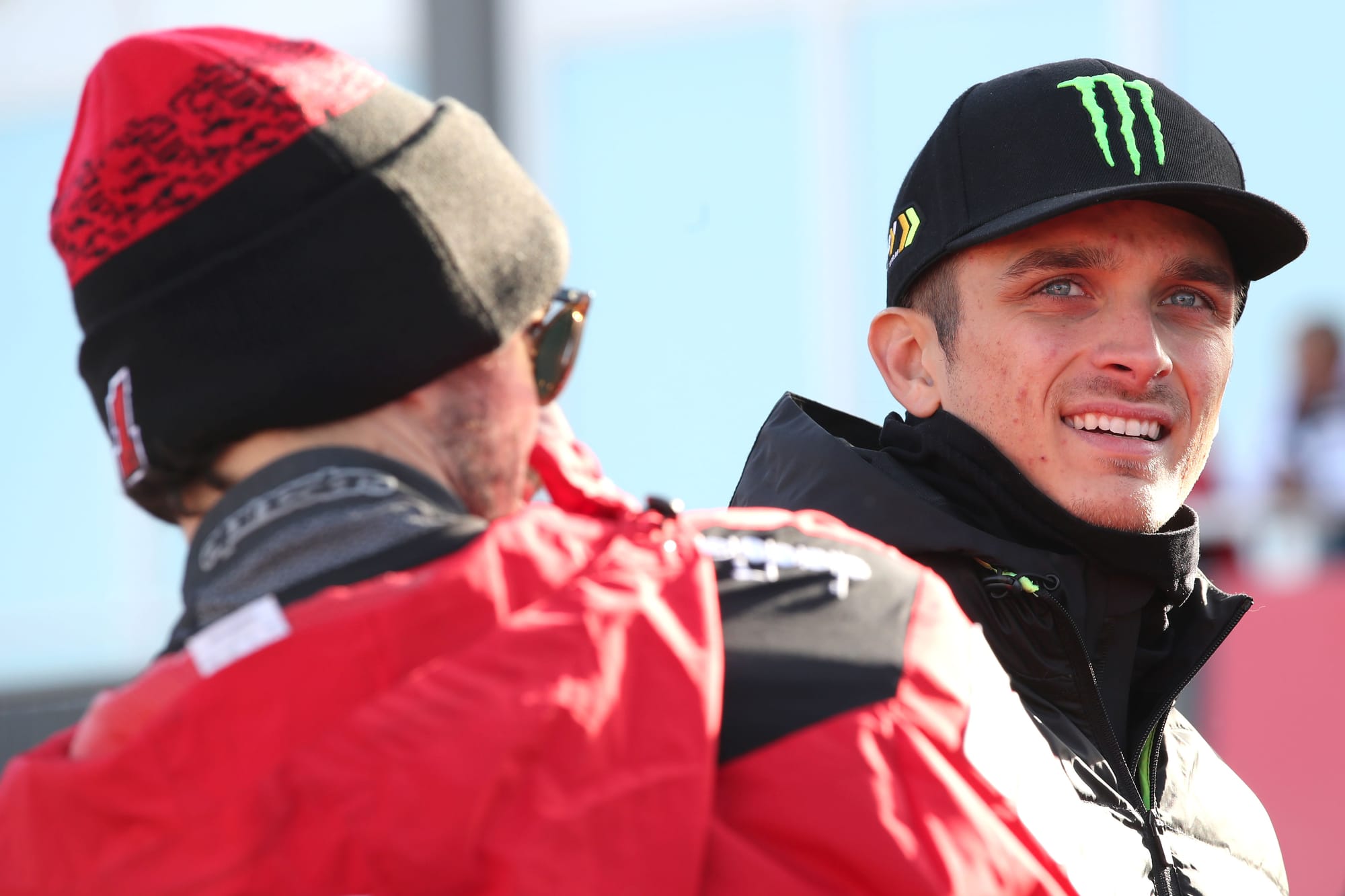
"It looks like - [I say that] because I'm within Honda but I'm also not - it will be a two-year contract for Marini, which surprises me a bit, but they [Honda] will have their reasons," Marquez told Spanish media in Qatar just over a week before the actual announcement came.
Marquez had expected a one-year deal for Fabio Di Giannantonio instead, as had many. But Honda ultimately valued the option of Marini - widely regarded as a cerebral, perceptive rider - enough to put multiple years on the table.
A curious commitment
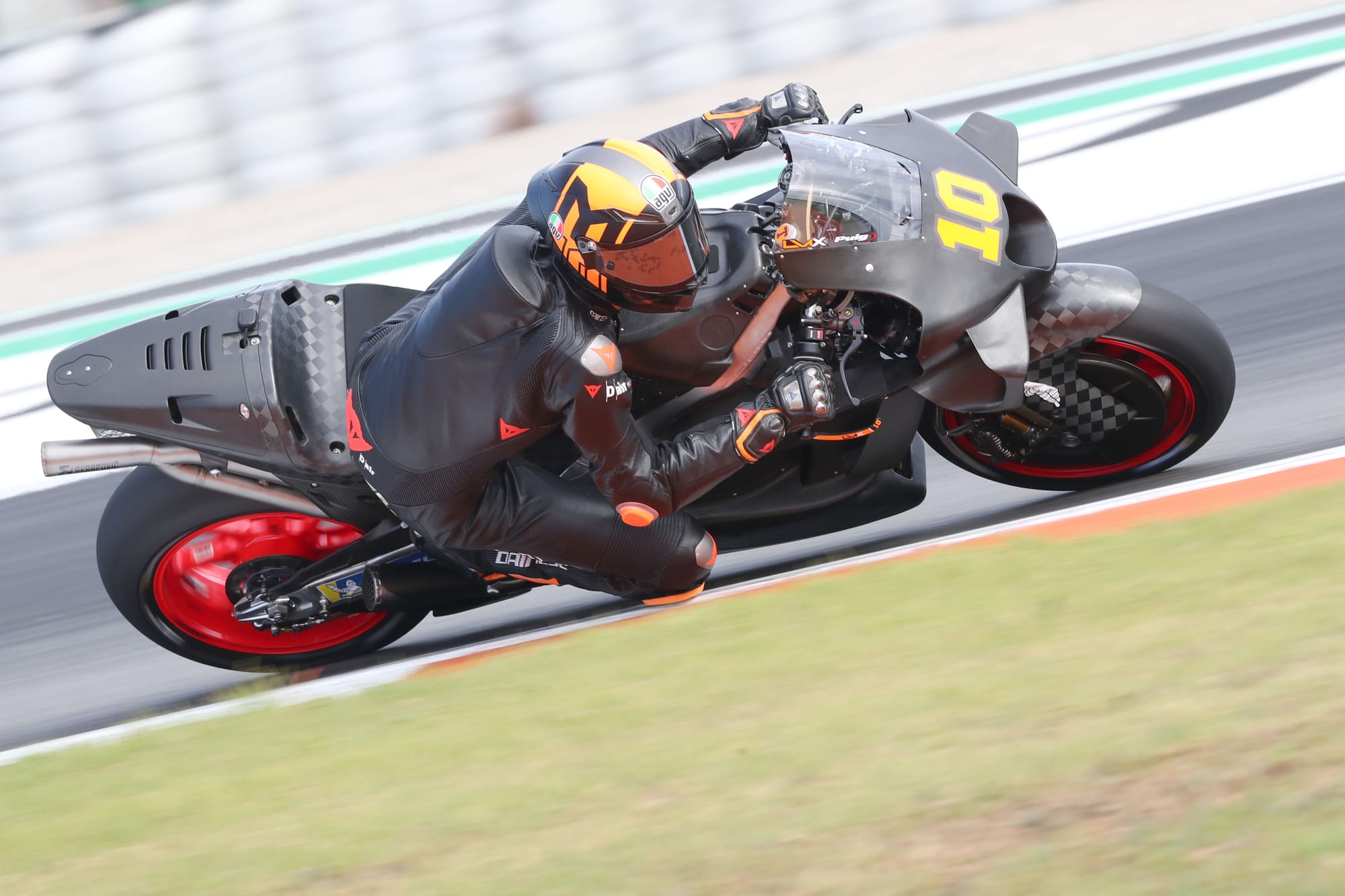
Whether Marini was worth making that concession for or not is beside the point - although it's worth saying here that 2023 was his best MotoGP season by far, that his general trend of improvement in the premier class has been obvious and that he has already made a far more assured start to life as a Honda rider in the post-season test in Valencia than one might have feared.
But the important thing is that the contract exists now, in this form, as a two-year commitment.
The exit clauses that exist or don't exist within the deal, on whose side they are, with which deadline - that's only known to Honda, Marini and his representatives. And that minutiae does clearly matter, albeit only to a point, because you'd imagine that if the move is a total failure, if Marini is struggling on the bike and not fitting in, then a mutual separation is always on the cards, like it is for every other MotoGP deal.
That, though, is very different to the idea that the contract somehow doesn't guarantee anything, that Honda could just discard Marini after a year if there's a free agent it would rather have.
Modern MotoGP contracts don't seem to be the sturdiest, true, and where there's a will there's a way, but Honda - crucially - has absolutely no recent track record for this kind of thing.
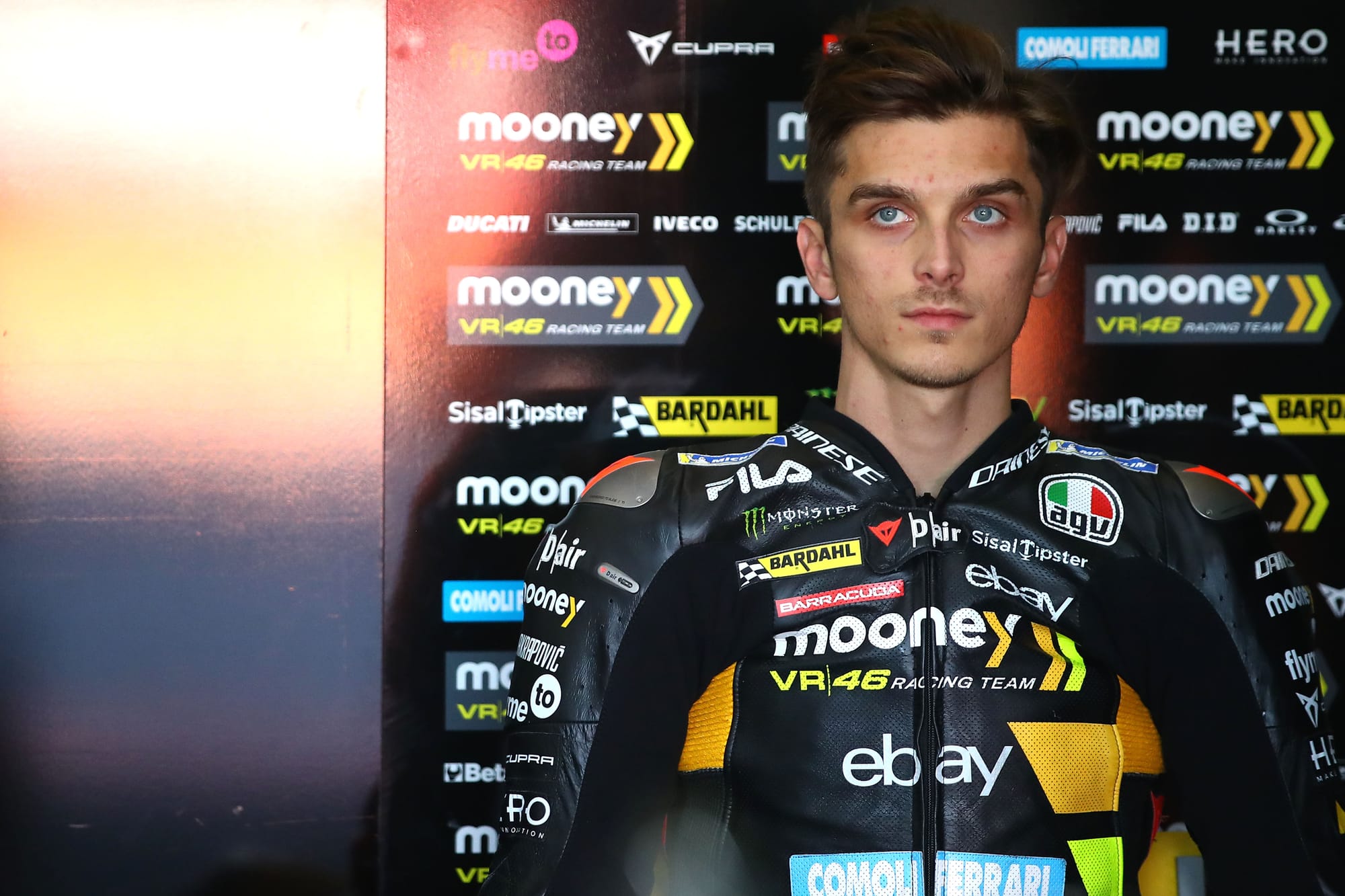
The turnover in its works squad has been huge, yes. In pre-season testing, when he's fully contractually cleared to wear the colours, Marini will be the ninth different rider to suit up in Repsol Honda garb since the start of 2018 (that list admittedly includes two injury stand-ins in tester Stefan Bradl and Iker Lecuona).
But none of those riders left mid-contract by Honda's initiative. Dani Pedrosa's deal expired. Jorge Lorenzo retired of his own accord halfway through a two-year deal. Alex Marquez was on a one-year deal before being shifted over to LCR. Pol Espargaro saw out a fairly fruitless two-year contract.
Marc Marquez hasn't seen out his four-year deal but it was his decision. And Mir contemplated an exit - and even retirement - this season, but opted against it and kept his seat.
Honda also handed off Alex Rins to Yamaha despite him being under an existing deal - but again, it was his decision. Not only that, it was an exit Honda probably could've prevented by trying to hastily make room at the Repsol team at the less-performing Mir's expense, and yet there was zero suggestion of anything like that happening.
So when Marini's deal is described as being for 2024 and 2025, there's zero reason not to take that at face value.
"I know what I can do"
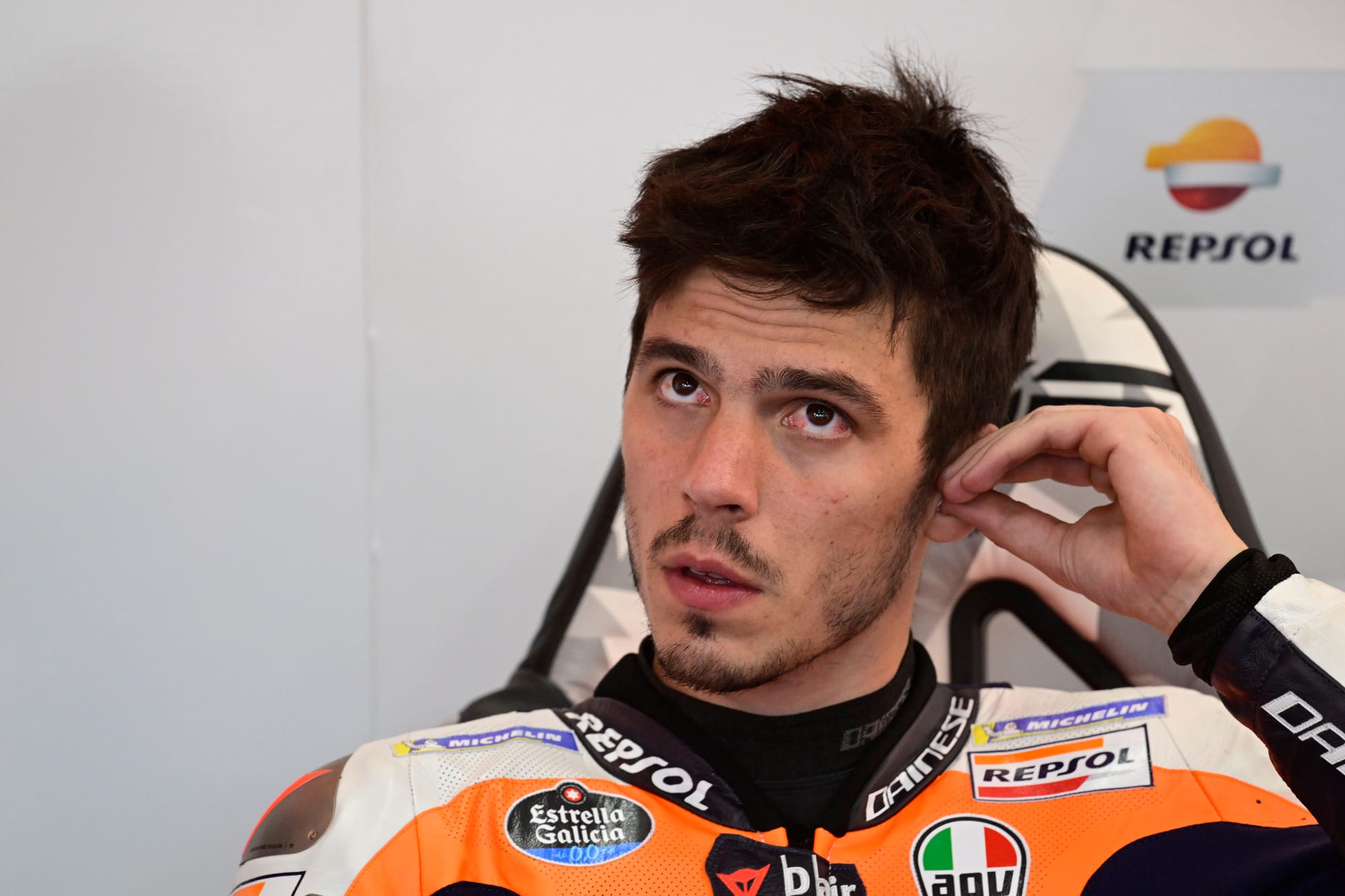
Mir, meanwhile, is entering the second and final year of his own deal, which in MotoGP effectively means that whether he continues or splits with Honda will likely be decided over the first few months of 2024.
You'd imagine he would not sign for 2025 ala Marini if offered that opportunity right now, anyway.
Mir's 2023 was a profoundly awful year, summarised best by him (jokingly, but still) telling media in the lead-up to the Valencia 2023 finale that "the only thing that I want is to finish [this weekend] and go to sleep, after a season like that one" - then getting injured five laps into said weekend and sitting out the rest of the three days.
It capped a season in which he finished 22nd, put up just 26 points (zero of them in the sprints) and sat out five of the grands prix. His scoring rate at Honda is 1.7 points per grand prix start where at Suzuki it was 8.6 points.
In that (inadvertent) end-of-season media appearance Mir also referenced "a beautiful chance to be able to decide more" in 2024, hinting fairly openly at the fact he would now have more pull in an organisation where the weight of six-time champion Marquez and his preferences may have felt overbearing.
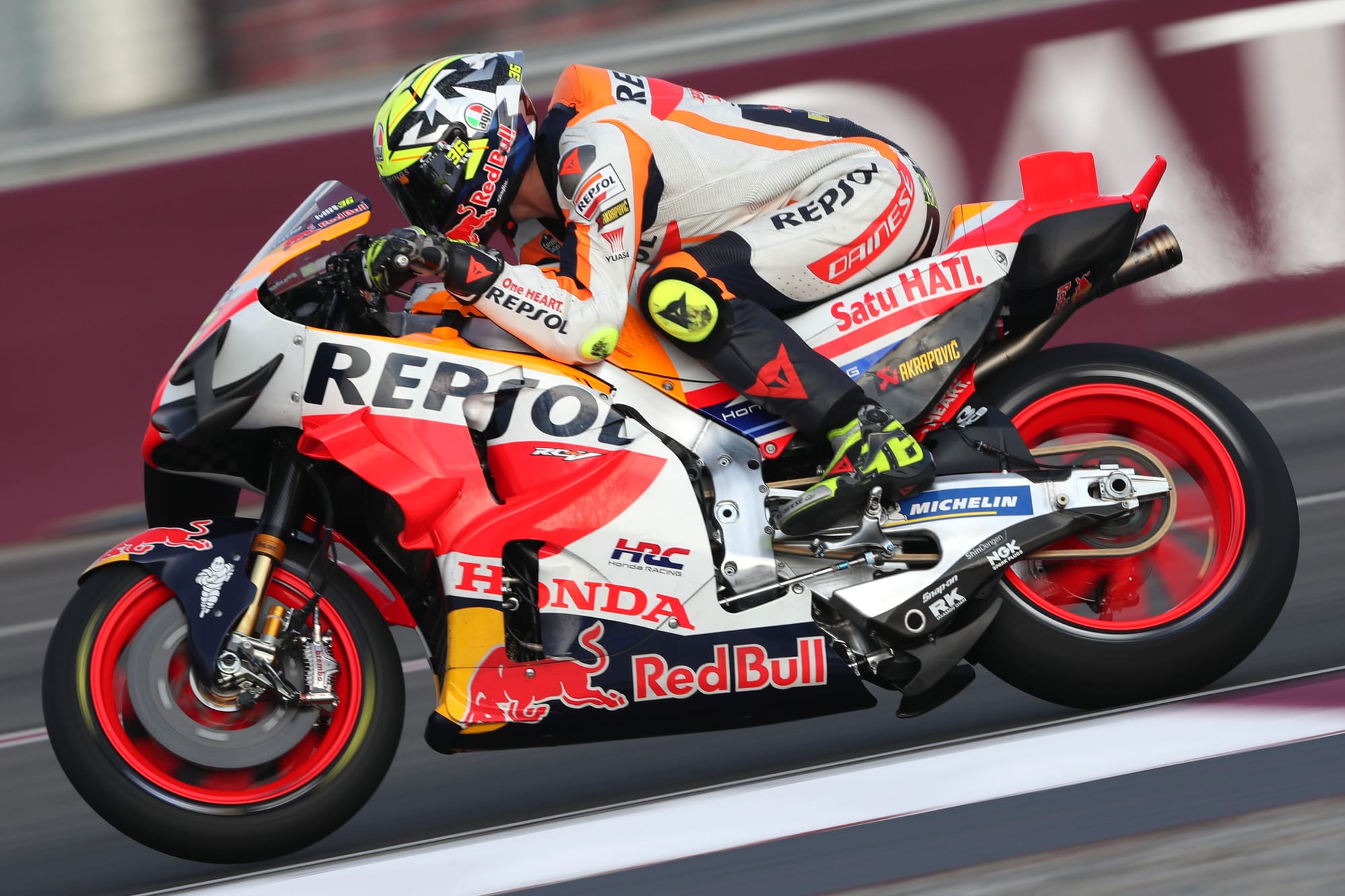
"The new riders [Marini and Zarco] that will come, as me last year, I was not able to make any comparison between last year's bike and this year's bike. They will be the same.
"So now I will have the opportunity to give more opinion, to understand, in what areas I think the correct direction is, in what areas, not. And if they listen to me I think we can do a good job."
And he also pointed out that he'd shown flashes of his old self "with a bike that's not working at all" in the latter half of the season.
"With a bit of help I know what I can do."
Contract year
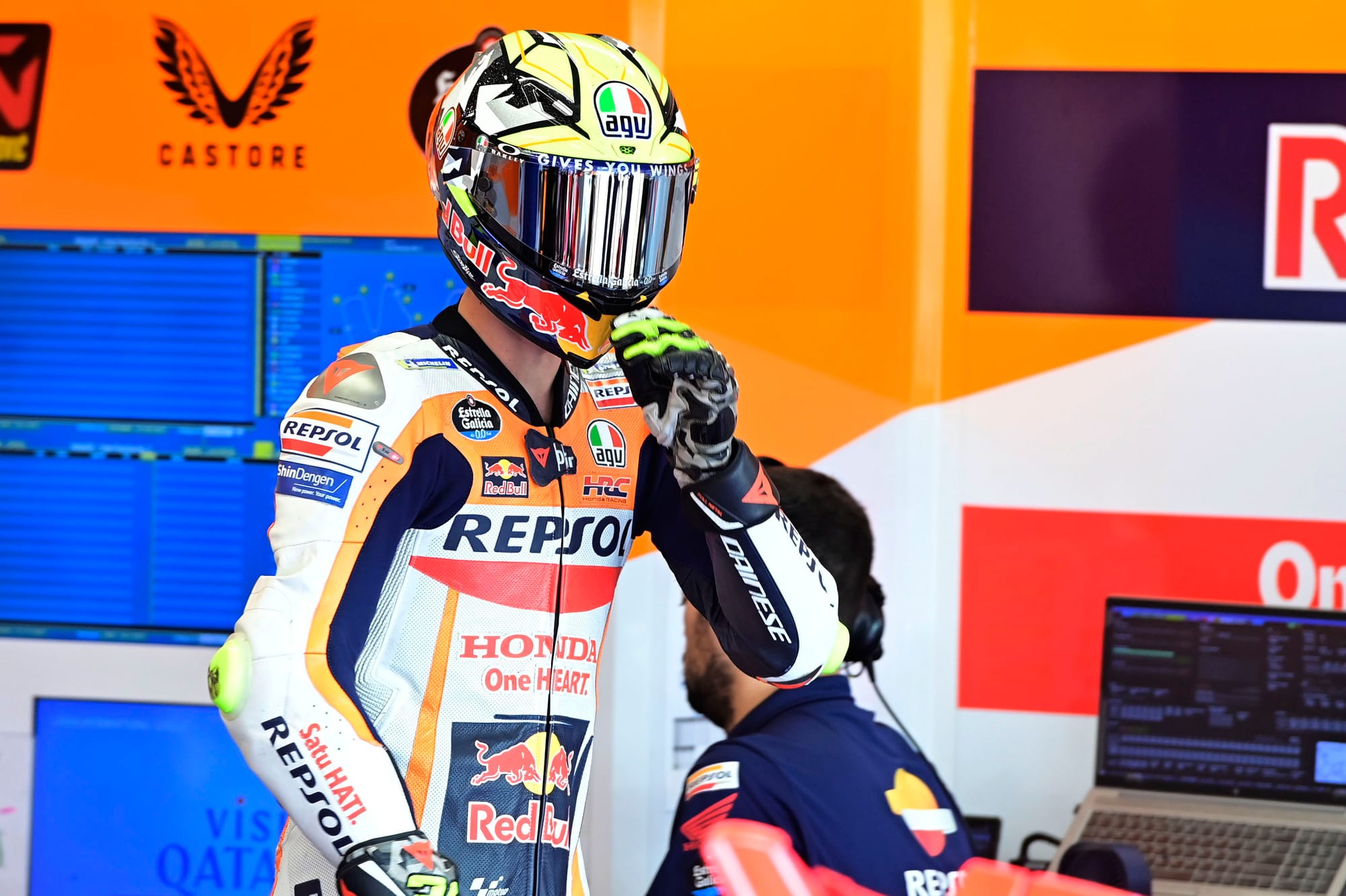
The bigger thing for Mir is, his first contact with the 2024 RC213V prototype was an extremely positive one, leaving him with an ear-to-ear smile and a seemingly much-brighter outlook on the future on a bike that was suddenly lighter, more agile and seemingly offered more feedback - a welcome development for somebody who tucked the front over and over and over again on the 2023 Honda en route to 24 crashes in the season (doubling his previous highest mark).
But we don't know for sure that the Honda is definitely much better yet, that it is competitive enough (it's had good tests before leading into eventually-questionable seasons), that the Japanese firm will be efficient in making the most of its Tier D concession status.
What we do seem to know, going by its apparent previous interest in one-year deals for 2024, is that Honda will be a player in the 2025 rider market.
It has the name, it has the financial pull, it has the legendary colours that most riders have dreamed of seeing themselves in - and it might now have a better bike! These are ingredients for a splashy hire, and that's before we even touch upon the possibility of that hire being prodigal son Marquez deciding that, actually, the Honda is competitive enough to return (something he is clearly interested in doing one day).
If that happens, or if someone else catches Honda's eye, a Jorge Martin or a Marco Bezzecchi, contractually there's only one free spot in the works line-up. Marini, again, is tied down to 2026.
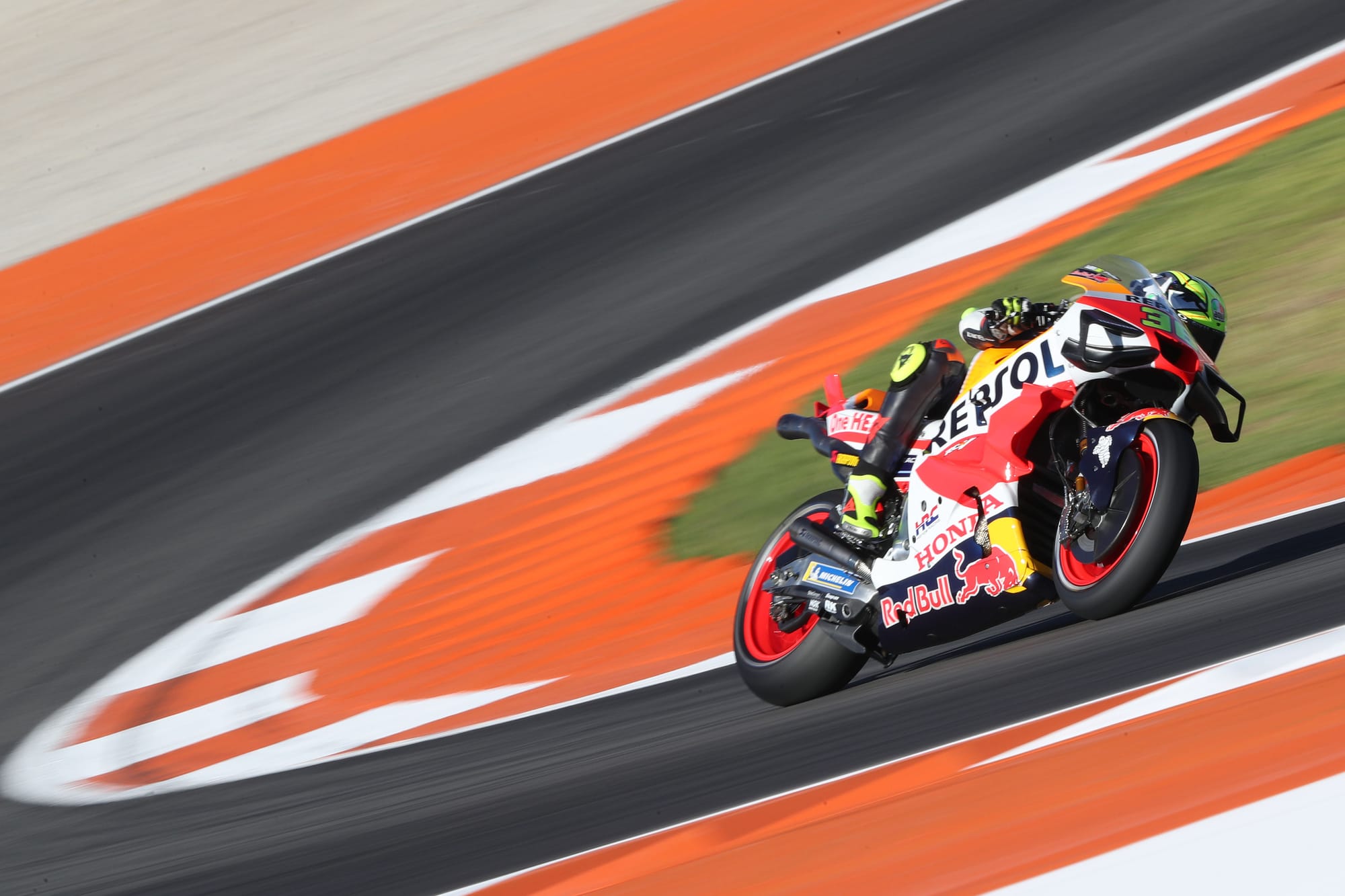
Mir said in Valencia that the identity of his team-mate - which both he and everyone else knew would be Marini but which everybody was dancing around a little - is "the last worry that I have", and that presumably applies to Marini's contractual situation, too, because the two-year contract was already widely known of at that point.
And indeed, there's only a certain range of performance where Marini having the 2025 ride locked down matters.
If Mir has another 2023-like season, both he and Honda will happily go their separate ways after 2024. If Mir has another 2020-like season (or 2021, which I maintain is actually the better Mir season despite not yielding the title or any wins), then Honda will have every reason to re-commit.
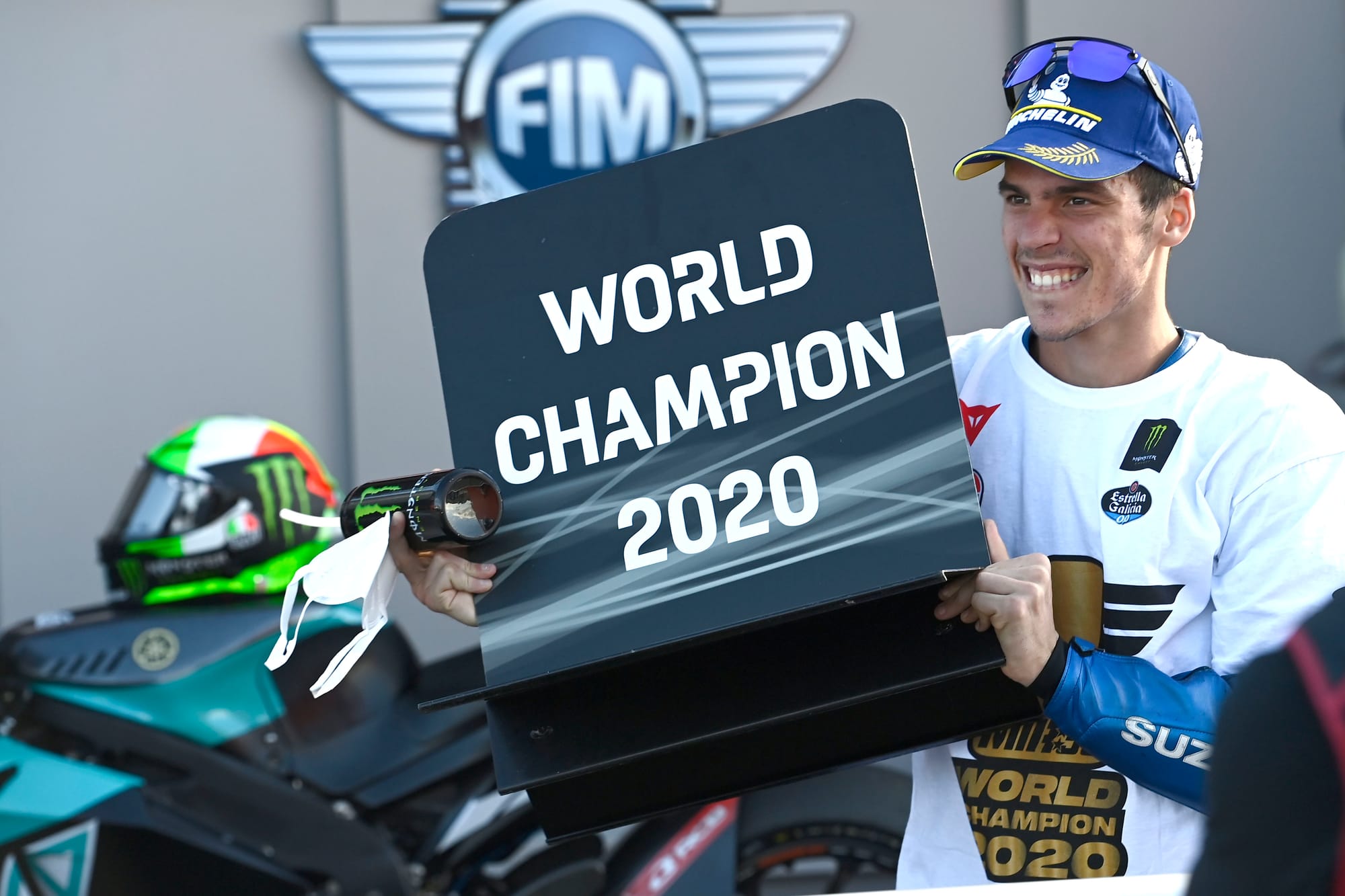
But if we're in that grey area between them - and it can be quite a large grey area - then Mir could very well find Honda's decision to approve a multi-year commitment on the other side of the garage to be an unwelcome complication for his own future.


